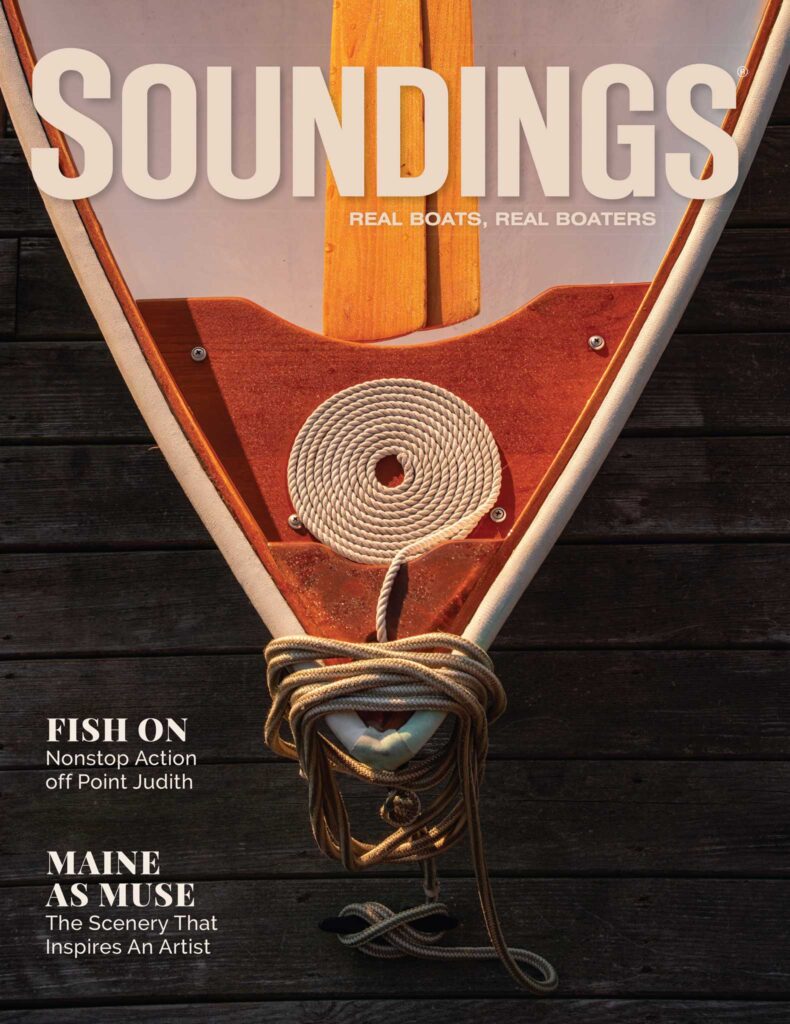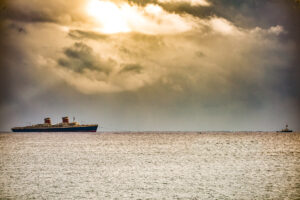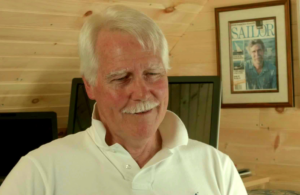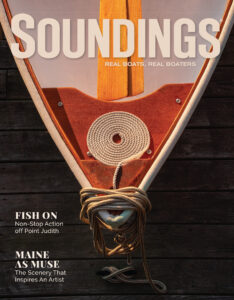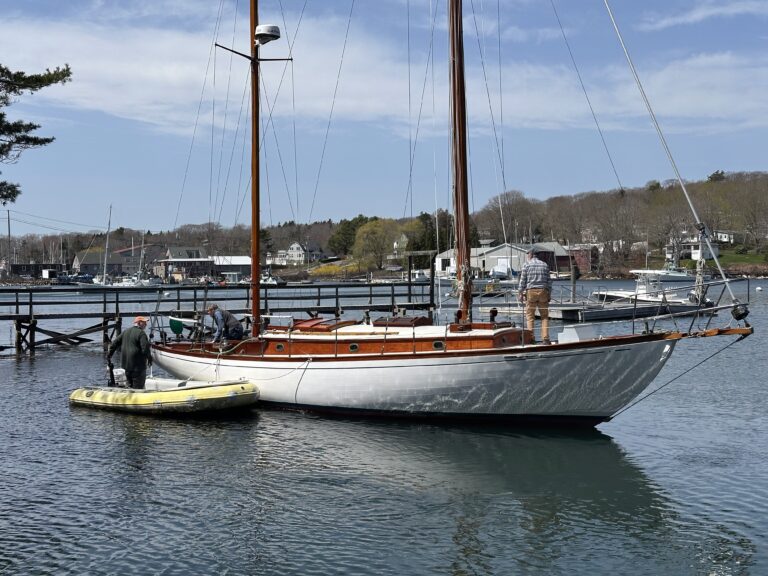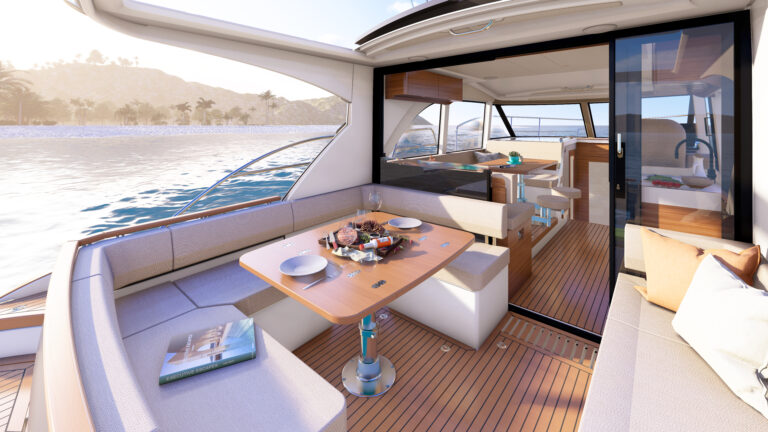
LOA: 48 feet, 5 inches • BEAM: 14 feet, 10 inches • POWER: single 150-hp John Deere 4045TFM diesel • SPEED: 6.5 knots cruise • RANGE: 6,825 nautical miles at 6.5 knots • TANKAGE: 2,000 gallons fuel, 250 gallons water • CONTACT: Seahorse Marine, Zhuhai, China, +86 (756) 550-1060. seahorseyachts.com
What was your introduction to boating, and what is your boating history? We both grew up on the West Coast of British Columbia, and we’re avid divers, so we’ve been in and around boats our whole lives. Before buying this boat, our biggest was a 26-foot Glen-L Hercules trawler, and we’ve also owned small runabouts and an aluminum landing craft. We volunteered with the Canadian Coast Guard Auxiliary (now Royal Canadian Marine Search and Rescue), which gave us great training, on-water experience and simulator time related to boat handling, seamanship, search and rescue, and first aid.
What are some challenges of long-distance passagemaking? For us, the combination of wind and swell has been the big issue. The northeast monsoon winds in the Philippines can be relentless, and many passages in the areas we like to cruise are exposed to swell coming from the west or northwest, making for some messy seas and uncomfortable crossings. Waiting for better conditions usually means we have to deal with wet dinghy rides to shore, bumpy anchorages and tedium.

Which of your seamanship skills have improved the most? All of our seamanship skills have improved over the last five years, but we are now much better at docking, grabbing moorings and anchoring. Docking a heavy steel boat with a full keel and a single engine can be challenging and stressful if the wind isn’t cooperating. We try to practice docking without relying on the bow thruster, just in case it doesn’t work one day when we really need it. We have a large triple hook on a length of line that makes it fairly straightforward to grab moorings.

What type of modifications/special gear/systems/equipment did you have to install to prepare your boat for this type of voyaging? When we bought our Diesel Duck, it came with a lot of necessary equipment for offshore passagemaking, from the Northern Lights generator and the Village Marine watermaker, to the ICOM IC-M802 HF marine transceiver. Most of our modifications since then have addressed three main areas: increasing power generation, reducing power usage and building redundancy.
“Do your research. Check out lots of boats. Walk the docks at marinas to look at how different boats are set up for cruising. Join groups, such as the Bluewater Cruising Association and Seven Seas Cruising Association. Go to boat shows and events such as TrawlerFest. Take some courses. Check out some of the many Facebook groups dedicated to sailing and cruising in the regions you plan to go. Ask lots of questions.” — Chris and Sandra Tretick
We added four solar panels that generate 800 watts with an Outback controller, and an Eclectic Energy D-400 wind generator. We’ve swapped halogen lights to LED and switched out an AC refrigerator with two Isotherm DC fridges. We installed a second depth sounder and VHF radio, upgraded our two Victron inverters and have multiple navigation charts and plotters from which to choose. Other changes have focused on security, safety, comfort, ease of use and diving.
We also installed a Viking RescYou self-righting life raft, a FLIR infrared and thermal camera to make night passages safer, an alarm and light system to deter unwelcome boardings, a man-overboard pole with a strobe and halogen fire extinguishers. We replaced our tender with a Bullfrog utility tender and added a dive compressor and a dive hookah system to make for easier hull cleaning.
This article originally appeared in the April 2018 issue.

